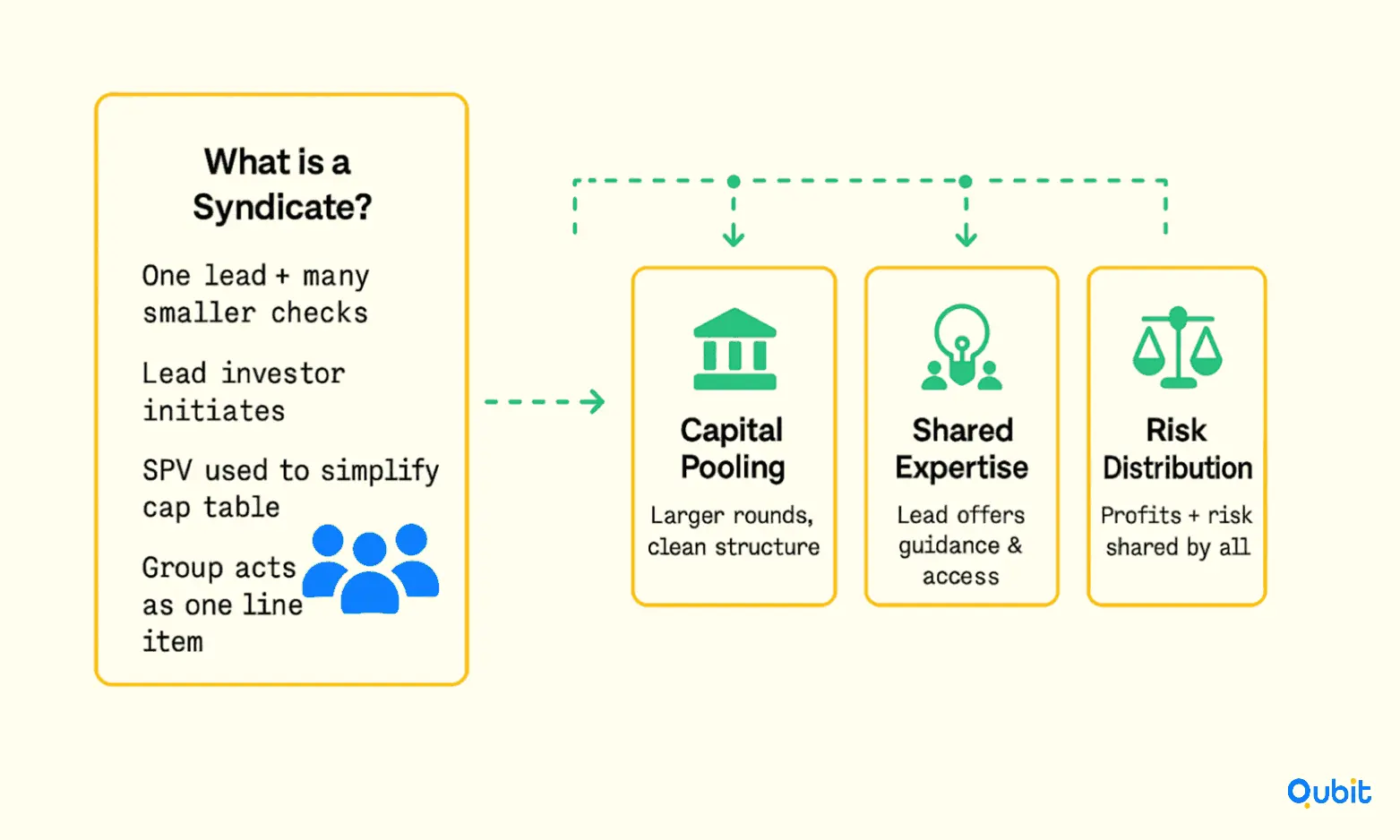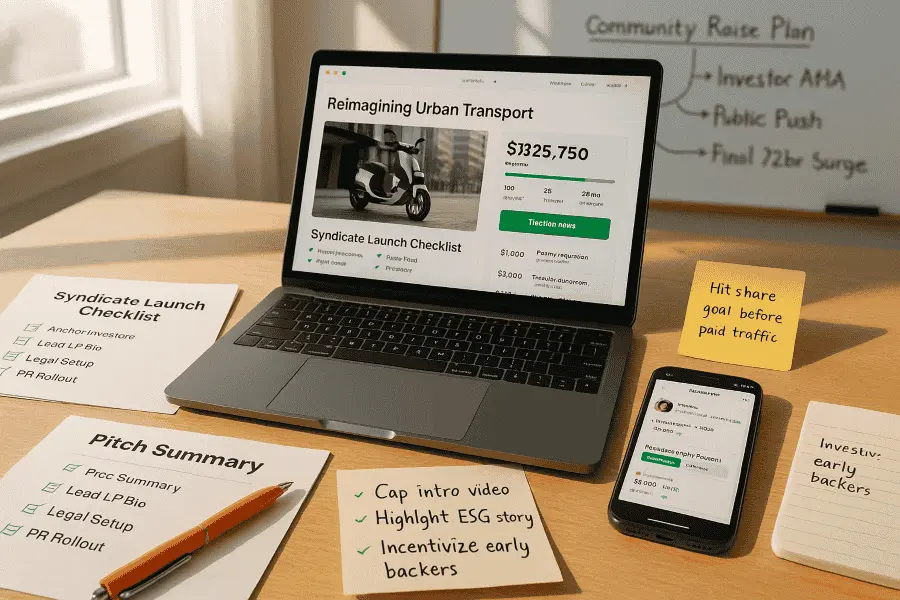As the global push for clean transportation, urban mobility, and sustainable logistics intensifies, the capital needs of mobility startups have never been greater, or more diverse. Traditional venture capital has fueled much of the sector’s growth, but recent years have seen a marked expansion in alternative funding approaches, specifically syndicate investing and crowdfunding campaigns. For founders, these tools aren’t just about raising money, they’re about building community, validating products, and accessing networks previously out of reach.
The sector’s pivot to new funding approaches coincides with dramatic industry expansion. Between 2024 and 2025, crowdfunding market growth accelerated from $17.72 billion to $20.46 billion globally, marking a 15.5% annual increase. This surge underscores crowdfunding’s rising importance for startups seeking both capital and community engagement. For mobility founders, such momentum signals wider investor receptivity.
This comprehensive guide explores how emerging and mature mobility ventures can leverage syndicate funding and crowdfunding, examines real-world mobility success stories, and offers actionable steps for planning, launching, and sustaining high-impact campaigns.
Syndicate Investing for Mobility Startups: Structure and Value
To launch a syndicate or crowdfunding campaign, mobility startups should choose the right platform, craft a compelling pitch, and line up experienced leads or strong communities to maximize investment and brand impact.

What is Syndicate Investing?
A syndicate, in the startup world, works as a mini investment fund pooled together for a specific deal or round. A lead investor, someone with a strong network, sector expertise, or conviction—initiates the syndicate. Other investors, from experienced angels to novices, join for smaller ticket sizes. They benefit from due diligence and the group’s collective bargaining power.
Key Attributes of Syndicate Investing:
- Pooling resources: Enables startups to raise larger rounds while keeping the ‘cap table’ (capitalization table, a record of company ownership) clean, since all syndicate members typically appear as a single line (often via a special purpose vehicle, or SPV (Special Purpose Vehicle, a legal entity used to pool investor funds for one investment round)).
- Collective expertise: The lead investor (the primary backer who organizes the investment round) handles negotiations and connects syndicate members to the founders, helpful for strategic guidance or introductions.
- Risk and reward sharing: Both return and risk are distributed, and lead investors often earn a “carry” (typically 10-20% of any profits generated by the deal for their work).
Platforms such as AngelList, Startupxplore, and Climate Angels have made syndicate creation seamless and widely accessible, including for mobility-specific deals targeting climate impact, EV infrastructure, and shared mobility solutions.
- Identify your funding need
- Select platform
- Craft story
- Pre-market
- Launch
- Engage backers
- Close round
Edge cases: If your product is highly regulated or you have nonstandard equity requirements, consult with legal or consider grant-based alternatives. To see how syndicates fit alongside other fundraising tools and support growth in mobility markets, check out the broader playbook on fundraising strategies, investor types, and finance options for mobility startups.
Why Syndicates Fit Mobility and EV Startups
Mobility businesses, especially those with hardware, regulatory, or city-level components, often need blended capital:
- Larger initial tickets: Assets like vehicles, sensors, or charging stations require more capital than most angel investors can provide solo.
- Cross-border reach: Syndicates can gather investors from multiple geographies, matching local market knowledge with global capital, essential for ventures rolling out across cities or countries.
- Cleaner cap table, easier governance: Instead of juggling dozens or hundreds of angel entries, a single SPV entry per syndicate keeps institutional VCs happy in future rounds.
Best practice tip: For founders new to syndicate fundraising, select a lead with proven sector experience, a substantive network, and a reputation for clear post-round communication—some of the most successful climate and e-mobility syndicates in India and Europe have grown this way.
Crowdfunding for Mobility: Models, Platforms, and Potential
How Crowdfunding Works in Mobility
Crowdfunding mobilizes capital from hundreds or thousands of backers, generally in three models:
Crowdfunding is especially powerful for B2C mobility brands, such as micro-mobility vehicle startups, e-bike companies, or shared vehicle systems looking to validate demand and build a user community in parallel with fundraising.
These models aren’t just theoretical, recent data shows significant momentum. In 2025, global crowdfunding market is projected to jump from $16.6 billion to $18.5 billion, growing at 11.6% CAGR. For mobility ventures, this expanding pool enables more accessible, innovative funding options.
Real-World Examples of Mobility Crowdfunding
Mobility startup campaigns are part of a rapidly growing movement. In 2023, crowdfunding market reached $17.2 billion worldwide. This broad surge provides fertile ground for companies leveraging innovative platforms to drive capital and community engagement.
Case studies illuminate what’s possible:
- Kiwee Mobility (France): The campaign targeted regional ‘fans’ and evangelists. These supporters could later become early users or local ambassadors.
- MOBY (Ireland): Raised nearly €800,000 on Spark Crowdfunding for its electric bike-sharing company, combining traction data with a strong local backer story.
- SoFlow (Switzerland): Secured over CHF 586,000 from 230 investors, pushing expansion into new European markets.
- Mount (US): Enabled Airbnb hosts to add shared vehicles, raising over $130,000 on WeFunder, proving niche concepts can still attract significant capital if the story resonates.
Comparative Table: Syndicate vs. Crowdfunding for Mobility Ventures
| Aspect | Syndicate Investing | Crowdfunding |
|---|---|---|
| Investor Pool | Accredited angels & HNIs | Public (can be non-accredited) |
| Structure | SPV or single cap table line | Many direct investors |
| Regulation | Typically stricter, more diligence | Platform-driven, regulated per market |
| Average Ticket Size | Larger, group-funded | Small to moderate per backer |
| Best For | B2B/asset-heavy, scaling ventures | B2C brands, early product launches |
| Expertise Added | High (lead brings expertise/network) | Variable, more broad support |
| Community Building | Medium | High (users = backers) |
| Exit Pathways | Can facilitate secondary sales | More complex to exit/convert shares |
| Platform Examples | AngelList, LetsVenture, SeedBlink, Climate Angels | Kickstarter, Seedrs, WeFunder, Conda |
Campaign Planning: Steps, Success Factors, and Pitfalls
Planning a Syndicate Fundraise
- Choose your lead wisely: A prominent sector investor not only brings funds, but opens doors to their network.
- Set target amounts: Ensure it’s enough for the next real milestone, syndicates take time and aren’t ideal for very small rounds.
- Platform selection: Different countries and sectors have preferred platforms, AngelList and LetsVenture for India and global deals; Climate Angels for climate mobility, SeedBlink and Startupxplore across the EU.
- Prepare legal/administration: Set up the SPV or SPV-equivalent; most platforms offer support, but founders should understand costs and how future rounds will be affected.
- Engagement and communication: Syndicate rounds thrive on updates; keep all members in the loop throughout diligence, post-close, and as milestones are hit.
Designing a Winning Crowdfunding Campaign
- Start with a compelling story: Clarity about your mission (emissions, congestion, sustainable transit), the team, and the “why now” is crucial.
- Early marketing is critical: Build a mailing list, create pre-launch buzz, and test messaging with real users well before going public.
- Transparency breeds trust: Share not only ambitions, but real challenges and how you’ll solve them. This transforms backers into advocates, not just donors.
- Set realistic targets: Big campaigns fail if the initial momentum is absent. Seed early pledges to reach 30–40% of your goal quickly, visible traction attracts more backers.
- Choose perks wisely (if non-equity): Early bird pricing, exclusive access, or personalized thank yous work well in the B2C mobility sphere.
- Follow legal and platform guidelines: Especially for equity crowdfunding, understand local securities law and compliance (consult legal experts as platforms don’t always cover all risks).
Pitfalls to Avoid
- Underestimating the campaign workload: Both syndicate and crowdfunding raises require dedicated time, content, and constant engagement.
- Ignoring the cap table: Direct crowdfunding can clutter equity structures, use platform solutions or legal counsel to aggregate shares efficiently.
- Overpromising in marketing: Backers and regulators increasingly expect full follow-through; reputational damage from failed or delayed campaigns can impact all future fundraising.
Case Study: Building a Community Through Crowdfunding—Kiwee Mobility
Kiwee Mobility’s crowdfunding success wasn’t only about capital. By launching an equity crowdfunding campaign, they invited first customers, local EV enthusiasts, and micro-mobility activists into the fold as both backers and real-world testers. The campaign’s content included not just financial projections but photos, manufacturing milestones, and interactive Q&A with the core team. This community-building aspect is why many mobility startups use crowdfunding as both a market validation and user acquisition lever.
Regional Nuances and Platform Choices
Certain regions show stronger appetite for syndicate or crowdfunding rounds due to local investing culture and regulatory environment:
- India: Platforms like LetsVenture and Climate Angels have tailored their syndicate models to climate and e-mobility startups, working closely with founders to structure deals that meet both capital and environmental impact goals.
- Europe: Equity platforms like Seedrs (UK) and Conda (DACH region) have backed B2C mobility campaigns, offering geographic “fan bases” the chance to invest directly and spread the word.
- US: Crowdfunding platforms such as WeFunder and Republic have welcomed micromobility, B2B telematics, and EV retrofit kits. Here, regulation is nuanced, especially regarding shareholding limits and disclosures (consult legal input for campaigns).
Building for Long-Term Success: From Campaign to Community
Successful syndicate or crowdfunding efforts don’t end at closing—they spark long-term relationships. The best founders:
- Engage post-campaign: Share regular product, revenue, and regulatory updates to backers and syndicate members.
- Leverage new networks: Investors gained through syndicates or crowd rounds can become early customers, beta testers, or referral sources.
- Use momentum for storytelling: Media, government, and future VCs increasingly view a strong, public backer base as social proof and validation, helpful for larger institutional rounds down the line.
For a deeper dive into matching your startup with the right kind of capital, structuring for future rounds, and building partnership-friendly terms, see the section on choosing the right investor for strategic fit and long term alignment.
Alternative and Hybrid Funding Strategies
- Syndicate plus Crowdfunding: Some ventures close both syndicate and crowd rounds almost in parallel—syndicates for anchor capital, crowd for community and brand value.
- Incentive Alignment: Make sure syndicate leads and large crowd backers are included in advisory channels or product roadmap reviews, integrating financial support with real feedback.
- Government & Corporate Initiatives: Agencies and mobility corporates may match or top-up successful campaigns as pilot proof-points, providing another growth lever especially for pre-revenue startups.
Non-Dilutive Capital for Mobility Startups
Building on these hybrid approaches, non-dilutive capital sources such as grants, debt, and revenue financing play a crucial role for early-stage mobility startups. These options allow founders to access growth funding without giving up equity, which is especially important when market conditions limit traditional investment. Grants from government agencies or climate-focused organizations can support pilot projects or technology validation. Debt and revenue-based financing offer flexible repayment structures, helping startups manage cash flow while maintaining ownership.
Using Investor Databases and Partnerships
These funding strategies are strengthened by using comprehensive investor databases and forming strategic partnerships across the mobility sector. Accessing curated lists of accredited investors or sector-focused funds can streamline outreach and increase the likelihood of successful campaigns. Partnerships with industry players, technology providers, or local governments can unlock additional resources, credibility, and market access for mobility startups.
Conclusion
Launching syndicate and crowdfunding campaigns gives mobility startups both financial support and an engaged, invested community. This community is ready to accelerate your vision.
Executed well, these campaigns can be the foundation for multi-stage growth, media attention, and both regional and global expansion. More than ever, the most innovative, mission-driven mobility startups are harnessing the crowd and the collaborative intelligence of syndicates to drive real-world transformation.
If you're ready to take the next step, our Investor Discovery and Mapping service offers tailored insights to connect you with the most suitable partners. Let us help you find the perfect match for your startup’s journey. Let’s get started.
Key Takeaways
- Syndicate investing and crowdfunding are increasingly common and effective tools for mobility startups overcoming early capital barriers.
- Well-structured syndicates bring expertise, efficient governance, and bigger round sizes; effective crowdfunding builds user-backer momentum and validates the vision in-market.
- Choosing the right platform, lead partner, and campaign structure is critical to success.
- Transparency, early engagement, and community building convert backers into advocates, not just one-time investors.
- For mobility and EV founders, blending these approaches with strategic venture, government, or corporate capital creates durable pathways to scale.
Frequently asked Questions
What are the main advantages of crowdfunding for mobility startups?
Crowdfunding helps mobility startups reach a broad user base, validate products, and build community quickly. It’s ideal for B2C brands launching new products.






